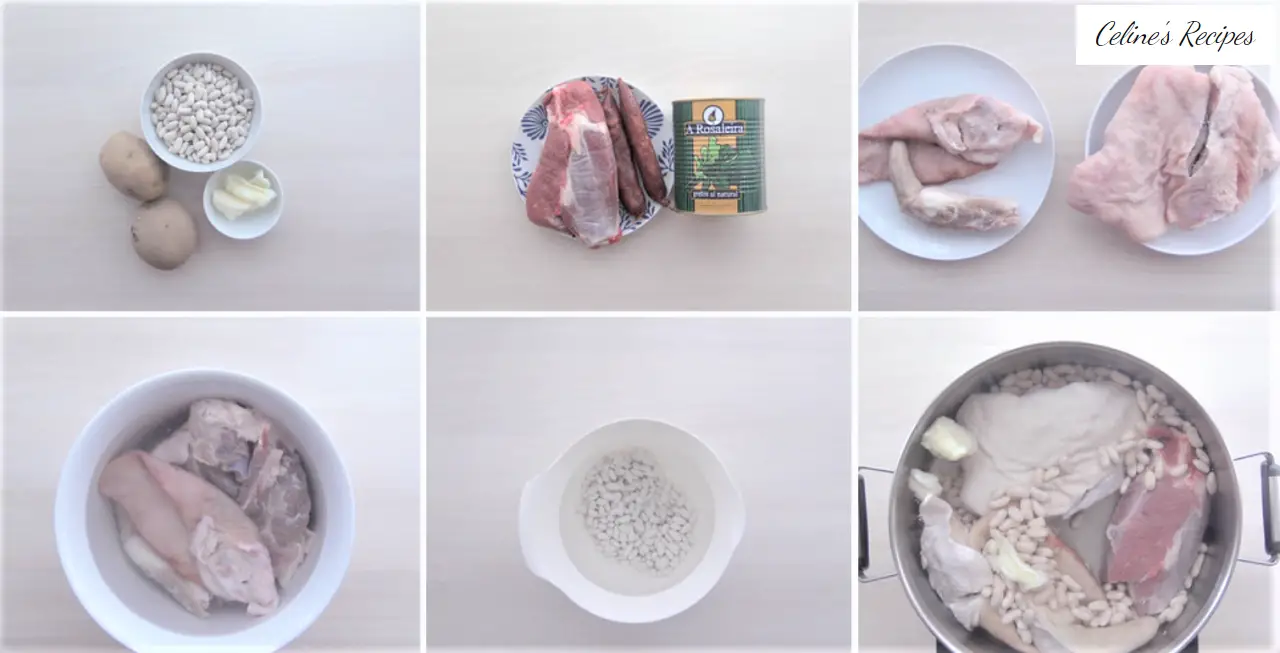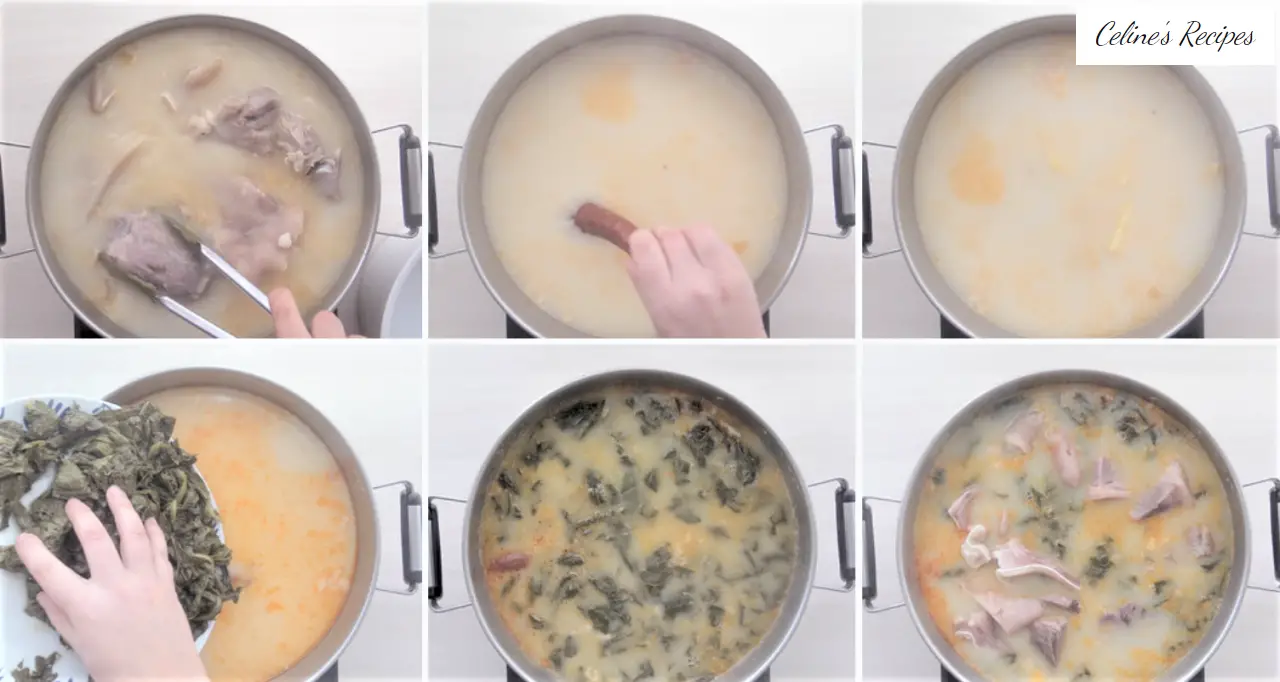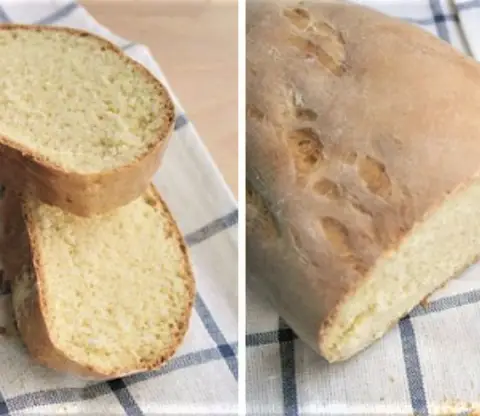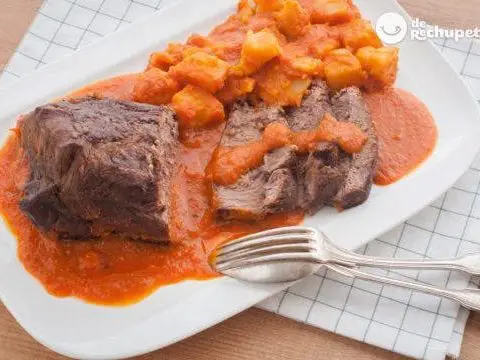
Info.
- Easy
- 100 minutes
- For 6 people
- € 3.9 / person
- 290kcal per 100g.
How to make Galician pot .
Since Roman times it has been known that Galician broth revitalizes body and mind, elevates the spirit and gives you wings, almost like a Galician viagra.
The Galician pot has a certified power against the cold, I assure you, a small plate or a warm bowl of this concoction, suddenly takes it from you and resurrects a dead person.
The turnip broth that I present to you today has a little bit of everything that I have recently brought from Galicia, some beans, a little potato, a piece of Celtic pork fillet, turnip greens and of course smoked chorizo and pork. In this case the (smaller) cone, quite a luxury
.instagram-follow img{width:100%;height:auto;} @media screen and (min-width: 1000px) {.instagram-follow {display:block;clear:both;float:right;width:50%;margin-left:1em;}}
It is a good dish of the most traditional foods and luckily it lasts over time. I remember how my grandmother Lucrecia prepared turnip or cabbage broth to eat or white beans for dinner, all the cousins and my sister, small plate to the belly without question.
It is still a dish that brings together the most common of the Galician garden, potatoes, greens and vegetables. And accompanied if they were left with a little slaughter, usually with a few simple ham bones or a little rib.
This Galician recipe has evolved to the one we know today and now it is very similar in each house, but each of them did it in a way, depending on what was in the pantry.
Preparation of the Galician pot
- The preparation of this dish begins 48 hours before serving it at the table, since it is the time necessary to get the pork to desalt and be at its optimal cooking point.
- We submerge the lacón in abundant cold water, which covers it completely, and we change this water every 8 hours.
- On the eve of preparing the recipe, at night, we put the pork shoulder in “renewed” water (which covers it completely) in a large saucepan where we are going to cook it.
- We put the beans in a saucepan with cold water, soak them for about 12 hours.
- If we are going to give the broth more consistency, we put the salted pork parts to soak: ear, tail, cap and pork shoulder. Changing the water at least once (as in Galician stew ).
- Before starting, drain the ingredients well and reserve. We put a large saucepan with water on the fire, about 5 liters approximately.
- We add the beans that we had to soak, the meat and a small piece of ointment (like a hazelnut in size).
- We leave to cook over medium heat for an hour and a half, foaming occasionally.
- Peel the potatoes and cut into cubes, flakes or laminates, as you like. They are added with the chorizos in the absence of 10-15 minutes of the final cooking of the broth.
- That is, when the broth takes 1 hour and 20 minutes. Once the hour and a half of cooking has passed, we remove the meat. We reserve.

Cooking the pot. Turnip greens
- We wash the turnip greens in cold water under the tap and remove the thickest stems, leaves that may be withered or slightly yellowish.
- For those who are not familiar with the flavor of the turnip, which has a certain bitterness, you can give them a prior blanching of 2 m. in boiling water that we will later discard.
- If you do not want the strong flavor of it, I recommend that you scald them the first time, so it will be perfect.
- After 20 minutes of cooking of potatoes and sausages, add the turnip greens and cook another 10 minutes.
- We check the point of the potatoes by pricking with a fork. Time to try salt and see if you need to.
- Although it is not usually necessary because the lacón and chorizo, they provide a point of salt that has not been removed from everything in the soak.


Final presentation of the Galician pot
- Chop the meat and chorizo into small pieces and introduce into the broth. We remove to put everything together.
- We give the final touch with a splash of extra virgin olive oil and that’s it.
- Keep in mind that the broth is to take several days and that from the second it is perfect because the flavors come together much better, it is often said that they “grab”.
- And remember, this broth is served very hot, generally as a first course at a meal or as the only one at a dinner.
- A good clay bowl keeps the heat and is the ideal container to drink it and feel like in Galicia.
Serve it in a large cup with a good piece of Galician bread, as it is eaten in my village.
A traditional stew that provides a lot of energy, keeping the heat very well, ideal for these cold days. A very complete recipe that contains legumes, vegetables and meat. A varied and balanced dish, cooked over low heat, delicious!
You can see all the step by step photos of the Galician pot recipe in this album. Do not miss any detail and it will be perfect.
Tips for a Galician yummy pot
- You can tune the broth as you like, my mother adds pilongas instead of beans. The beans or white pods give an impressive white broth, my grandmother Lucrecia’s specialty.
- This broth is better made the day before and reheated, but don’t overdo it when it comes to reheating it either.
- If the beans are dry they are left as we have done in the recipe, to soak in cold water. But if you are lucky to get them fresh it is not necessary. You have to reduce the cooking time, and you will get a much softer broth.
- Vegetables are best used in season. As I mentioned, I like it with white cabbage or cabbage. For those who are passionate about turnip greens, you already have them all season canned, they are quite good.
- As a curiosity, the bitter taste of turnip greens is due to substances called glucosinolates, which have anti-cancer properties. So if we blanch turnip greens to remove these substances, we take away part of those properties.
- If you can’t get either dry or fresh beans, there is always the option of the pot. I have never tried it but I imagine they will be added to the end of everything after cooking the potatoes. The problem is that the water in the broth does not get as much flavor, but it is a valid option.
- If the broth is too loose we can do as in the Asturian bean stew , at the end of cooking add a few beans and mashed potatoes with a fork, and thicken it.
- And if there is more than enough, I doubt it, take advantage of the remains for some croquettes, like the cooked ones , they are impressive.






